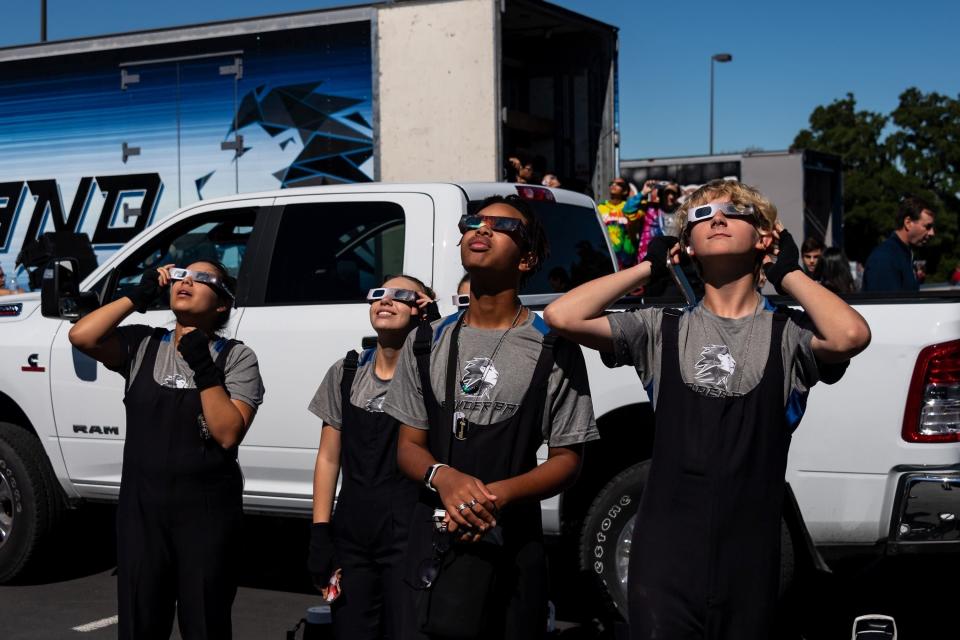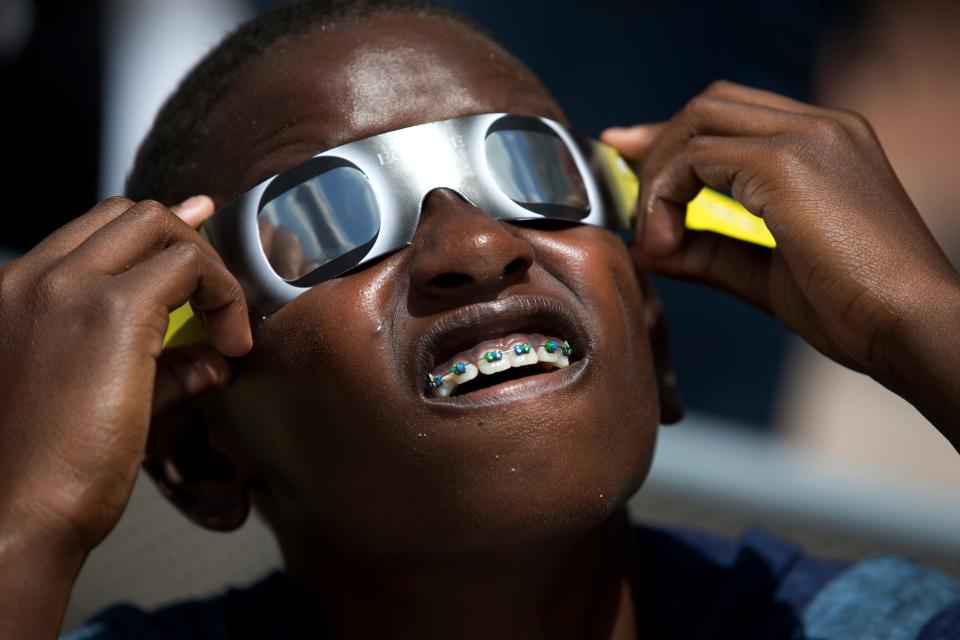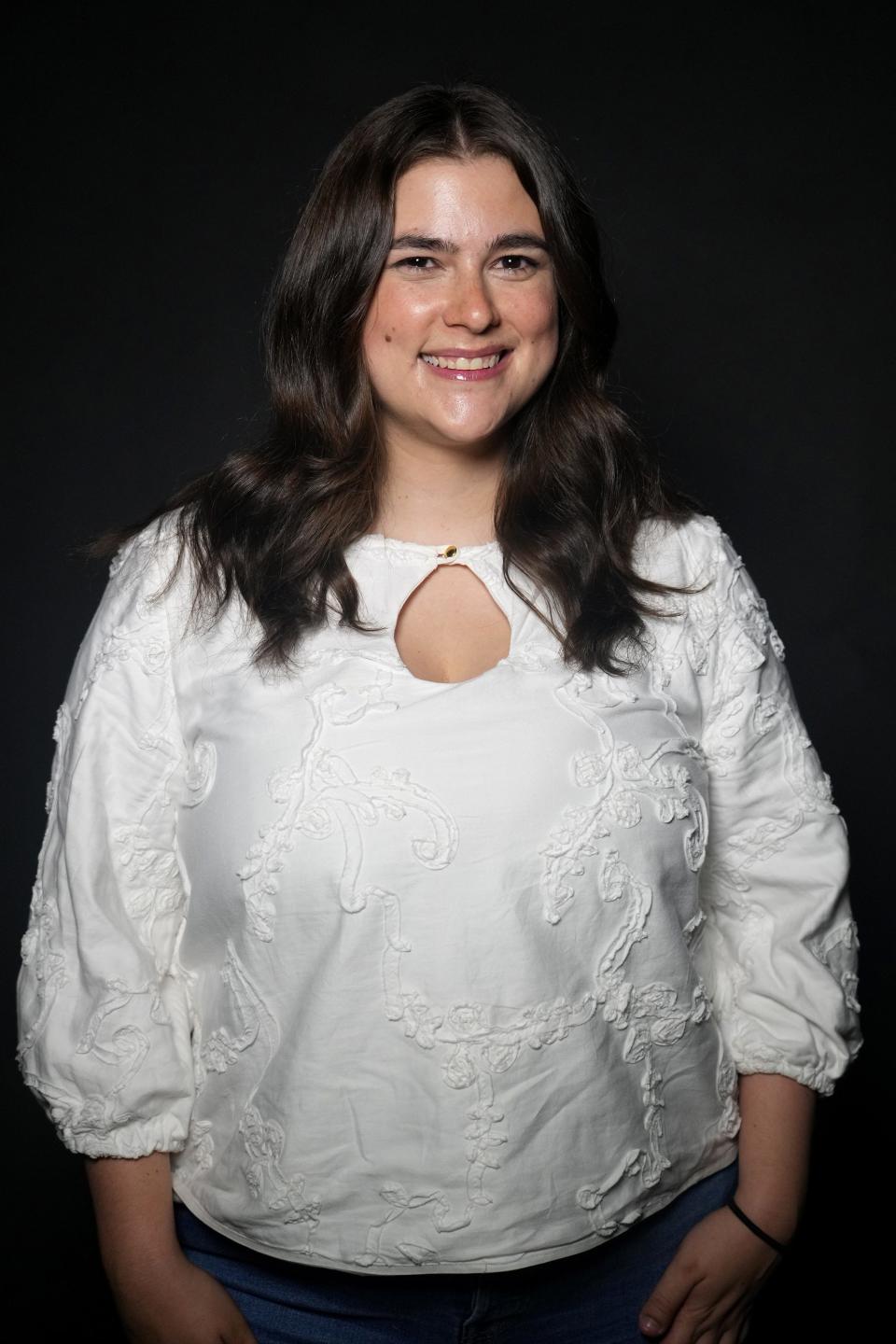Where are the best spots to view the total solar eclipse in Texas? Here are a few options
So, where exactly do you need to be during the total solar eclipse in April? You have a few options.
A total solar eclipse, in which the moon passes in front of the sun, blocking its light, will move over Texas on April 8, and Austin is on the edge of the eclipse's path of totality. The path of totality encompasses the areas that will experience total darkness, while areas outside the path will experience only partial darkness. The path of totality is at least 100 miles wide, so you have plenty of room for viewing.
The closer you get to the path of totality's center, the longer the period of darkness will be
We spoke with Will Best, a research associate and lecturer in the University of Texas' astronomy department, to find out if any spots were better for viewing the eclipse. He said you should focus on the center of the path for longest viewing, but that you can't go wrong if you're in the path of totality.
"I think (the center of the path) gets up to almost 4½ minutes (of darkness). But once you're anywhere roughly near the middle, within 20 or 30 miles of it, I think you're going to get a good three or 3½ minutes," Best said. "It's only on the very edges of the path that it starts to drop off in time significantly."
Austin, though on the edge of the totality path, will still get roughly two minutes of total darkness starting around 1:36 p.m., according to the National Solar Observatory's interactive map. Torreón, in the Mexican state of Coahuila, will see the longest duration of totality, with 4 minutes, 28 seconds, according to NASA.
The center of the path of totality will run west of Fredericksburg.
More: Austin will be cast in complete darkness by total solar eclipse in April. What we know.
The moon moving in front of the sun will take some time
Totality is expected to start around 1:35 p.m. for the Austin area, according to NASA, but the moon will start to move in front of the sun earlier than that. Best said it will be similar to October's annular eclipse — temperatures started to drop and the sky started to darken before the actual eclipse occurred.
The National Solar Observatory map says the eclipse will start around 12:17 p.m. and end around 3 p.m. in the Austin area.
"The whole process of the eclipse, the moon moving in front of the sun, will take more than an hour. And then it'll take more than an hour after the total phase for the moon to completely move off the sun. So there's lots of buildup time," Best said.

Be on the north end of whatever eclipse-viewing venue you choose
The sun is going to be almost directly south when the eclipse occurs, Best said. The simplest way to see the eclipse will be hanging out on the north end of a park.
"Then you'll be looking south, and there won't be trees blocking your view," Best said.
More: It might shock you to learn when Austin’s last total solar eclipse was

If you're in downtown Austin on eclipse day, head to Lady Bird Lake
Any place that has an open view to the south is your best bet, Best said. For those working downtown on eclipse day, he suggests going down to Lady Bird Lake.
The total solar eclipse is going to live up to the hype
"People say that it's an amazing experience and in particular that it's an experience that gets very hyped and then actually lives up to the hype," said Best, who will be seeing a total solar eclipse for the first time April 8.
We interviewed NASA astrophysicist Alex Young in September, and he laid on the hype. We think he's allowed to do that, though — he has seen four total solar eclipses.
"The first time I saw it, and this has happened every time since, I felt chills, like goose bumps, and all the hair on my arm stood up. It was like this rush of adrenaline came over me because of the change in the environment," Young said. "Getting cold and getting dark happens so quickly that your mind is confused.
"It's really, really amazing," Young said. "It is just such an amazing experience."
Keep up on the eclipse

Kelsey Bradshaw, the American-Statesman’s resident total solar eclipse fanatic, will be your go-to as the total solar eclipse passing over Texas on April 8 gets closer. Kelsey is a native Texan who has been covering Austin for the American-Statesman since 2018. She jumped at the chance to lead the Statesman’s total solar eclipse coverage because it's one of those cool, rare, for-everyone moments. She can’t wait for the city as a whole to cast our eyes skyward. Look for Kelsey’s face on the Austin360 Instagram account in the coming weeks and stay up to date with all our total solar eclipse coverage at statesman.com.
This article originally appeared on Austin American-Statesman: Where to experience total solar eclipse's path of totality in Texas

